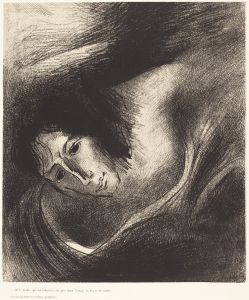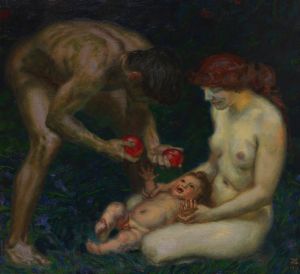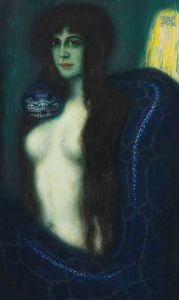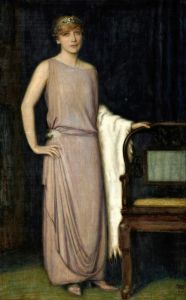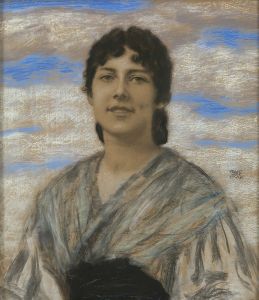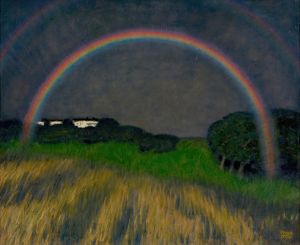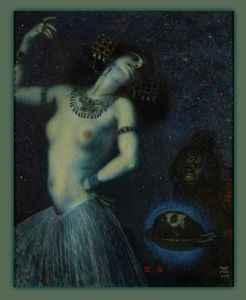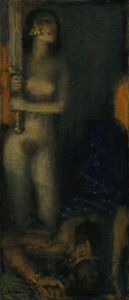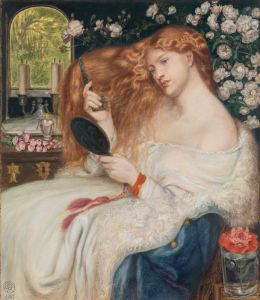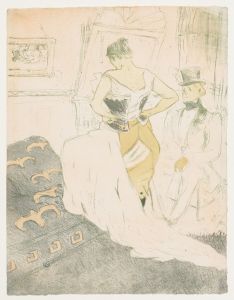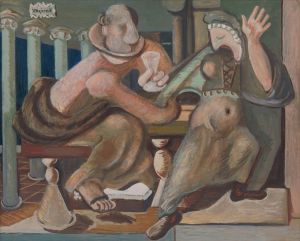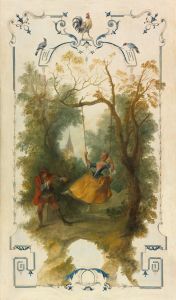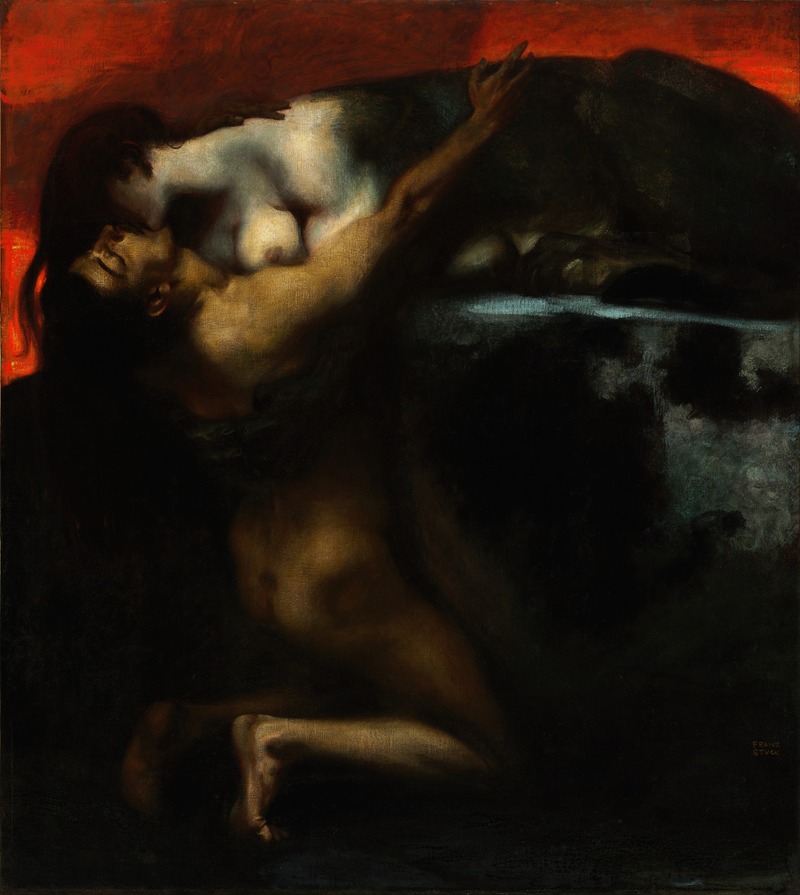
The Kiss of the Sphinx
A hand-painted replica of Franz von Stuck’s masterpiece The Kiss of the Sphinx, meticulously crafted by professional artists to capture the true essence of the original. Each piece is created with museum-quality canvas and rare mineral pigments, carefully painted by experienced artists with delicate brushstrokes and rich, layered colors to perfectly recreate the texture of the original artwork. Unlike machine-printed reproductions, this hand-painted version brings the painting to life, infused with the artist’s emotions and skill in every stroke. Whether for personal collection or home decoration, it instantly elevates the artistic atmosphere of any space.
Franz von Stuck's painting "The Kiss of the Sphinx" is a notable work by the German symbolist artist, created in 1895. Stuck, who was a prominent figure in the Munich Secession movement, often explored themes of mythology, sensuality, and the darker aspects of human nature in his art. "The Kiss of the Sphinx" exemplifies these interests, presenting a striking and enigmatic image that has captivated viewers since its creation.
The painting depicts a mythical sphinx, a creature with the body of a lion and the head of a woman, engaged in an intimate and somewhat unsettling embrace with a man. The sphinx, a symbol of mystery and danger, is shown kissing the man, who appears to be in a state of surrender or trance. This interaction between the human and the mythical creature suggests themes of seduction, power, and the allure of the unknown. The sphinx's expression is both alluring and menacing, capturing the dual nature of her character as both a seductress and a potential threat.
Stuck's use of color and composition in "The Kiss of the Sphinx" enhances the painting's dramatic and symbolic impact. The background is dark and atmospheric, drawing attention to the central figures and creating a sense of isolation and focus. The contrast between the pale skin of the man and the darker tones of the sphinx's body further emphasizes the tension and intimacy of their interaction. Stuck's attention to detail, particularly in the rendering of the sphinx's features and the man's expression, adds to the painting's emotional depth and complexity.
"The Kiss of the Sphinx" reflects the broader cultural and artistic trends of the late 19th century, a period marked by a fascination with symbolism, mythology, and the exploration of the subconscious. Artists like Stuck were interested in probing the deeper, often darker aspects of human experience, and their work frequently incorporated allegorical and mythological elements to convey complex ideas and emotions. The painting can be seen as a reflection of these interests, using the figure of the sphinx to explore themes of desire, danger, and the unknown.
Franz von Stuck's work, including "The Kiss of the Sphinx," played a significant role in the development of Symbolism and influenced later movements such as Art Nouveau and Expressionism. His ability to blend classical themes with a modern sensibility made his work both innovative and timeless. Today, "The Kiss of the Sphinx" is regarded as one of Stuck's masterpieces, showcasing his skill as a painter and his ability to evoke powerful emotions and ideas through his art.
The painting is housed in the Städtische Galerie im Lenbachhaus in Munich, Germany, where it continues to be a subject of study and admiration. It remains an important example of Symbolist art and a testament to Stuck's enduring legacy as a master of capturing the complexities of human emotion and the allure of the mythical and mysterious.





